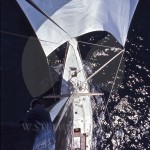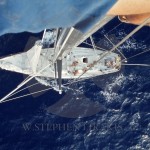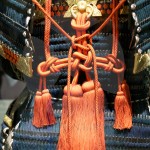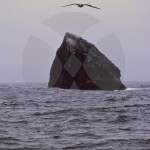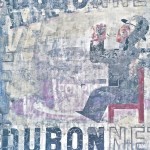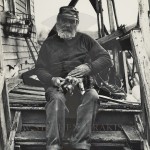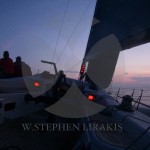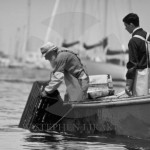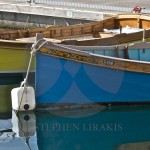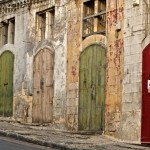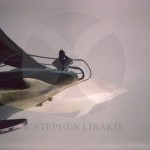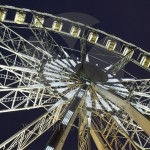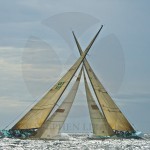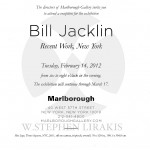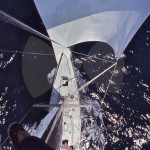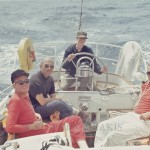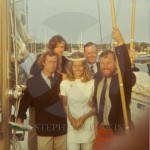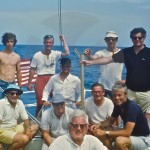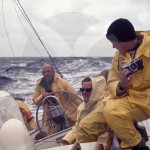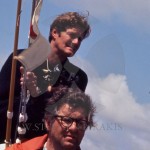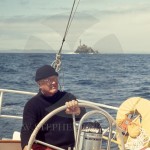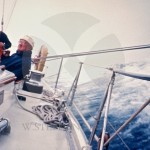President’s day weekend, the weather so far has co-operated. I have watched these dogs walk their owner down the street for some time. Finally yesterday I had a camera within reach and met the dogs. Big and friendly, the owner had trouble holding them while I photographed. They wanted to play.
Month: February 2012
MORE FAVORITE PHOTOGRAPHS
CLICK HERE to see more
A REVIEW OF FAVORITE PHOTOGRAPHS
I have carried a camera and used it, for many many years. Having started with a Kodak Brownie, later a 35mm, then medium format, now digital. I really like digital. That is probably heresy for many serious photographers. The transition, like with most change, came slowly and not without struggle, but now I am a convertee.
There is always a memory of the missed moment; but I am also pleased with those captured memories and the story connected to every photograph. If you would like to see more click HERE.
VALENTINE’S DAY IN NEW YORK
Bill Jacklin, a friend, had an opening at the Marlborough Gallery in New York on Valentine’s Day. Great fun and a wonderful exhibit. We made our trek to New York an expedition of sorts. We visited the Hispanic Society,(w 155th st) something that had been on my list for years. If you read the news in New York, we were on the subway in Hamilton Heights only moments before the shooting. I suppose for New Yorkers a typical day.
The next day a whirlwind tour on the Metropolitan Museum to visit the piece of pottery that we had discovered and alerted the museum to it’s existence. We had not seen it since it had been placed in the collection (the American Wing)
LIGHTSQUARED
With a little help from a friend, Andy, who alerted me to the followup on this story.
Agency tasked with overseeing military and government spectrum use says interference with other devices is unavoidable.

LightSquared suffered a possibly fatal blow today when the FCC said it would indefinitely suspend the company’s effort to build a national wireless broadband network using satellite spectrum.
The National Telecommunications and Information Administration, a Department of Commerce agency tasked with overseeing military and government spectrum use, determined that LightSquared’s interference with other devices, including GPS devices, was unavoidable.
“Based on NTIA’s independent evaluation of the testing and analysis performed over the last several months, we conclude that LightSquared’s proposed mobile broadband network will impact GPS services and that there is no practical way to mitigate the potential interference at this time,” the NTIA said in a letter (PDF) to the Federal Communications Commission.
Based on those findings, the FCC said it would “suspend indefinitely” the startup’s conditional waiver to operate. “The commission clearly stated from the outset that harmful interference to GPS would not be permitted,” the FCC said. “Consequently, the commission will not lift the prohibition on LightSquared.”
Related stories
LightSquared responded by saying that it disagreed with the NTIA’s conclusions, arguing that they were based on a “severely flawed testing process.” However, the company “remains committed to finding a resolution with the federal government and the GPS industry to resolve all remaining concerns. LightSquared is confident that the parties will continue the on-going efforts to explore all engineering options and alternatives to find a solution to this difficult issue.”
The FCC granted LightSquared a waiver in 2011 to tap its spectrum, which is supposed to be used for satellite and terrestrial communications, for terrestrial only use. As a condition of this waiver, the FCC said that there can’t be any harmful interference between LightSquared and others in nearby spectrum.
But the GPS industry claims that LightSquared’s network will interfere with its receivers. Meanwhile, LightSquared acknowledges potential interference issues, and it’s already agreed to not use the spectrum closest to the GPS bands. It’s also demonstrated how filters can be used to mitigate interference.
IT’S ONLY MONEY
Projected costs associated with the America’s Cup have skyrocketed to $163 million — up from the city’s 2010 estimate of $86 million. Meanwhile, doubts are growing about whether the event will be as exciting or as lucrative as initially projected.
The cost to overhaul dilapidated piers has more than doubled over the past year — from $55 million to $111 million.
Under a proposal that will go before the lawmakers this month, America’s Cup organizers, led by billionaire software mogul Larry Ellison, would pick up the tab for most of those costs in the short term, and then recover them from the city and its port through long-term leases or ownership of public waterfront land.
The San Francisco Board of Supervisors’ budget analyst, Harvey Rose, wrote in a report published Thursday evening that the city would need to spend $52 million on police, transit and other services to host the regattas this year and next — that’s up from an estimate of $31 million published in late 2010.
To partly defray those costs, Rose estimated that San Francisco would reap $22 million from additional sales and hotel taxes and other revenues generated from visitors and event-related spending.
A nonprofit group established by America’s Cup organizers to raise funds to defray city expenses aims to raise $32 million. So far, that group has told the city that it has received pledges for at least $12 million.
The supervisors’ budget and finance committee hearing into the proposed deal will be held on Wednesday. The full board will vote on the plan later this month.
Source: The Bay Citizen (http://s.tt/15Djm)
The America’s cup has been moving away from the public a little more every year. At the same time, never has the America’s Cup needed the public as much as now. I find the overtures by the AC to the public are awkward at best. San Francisco is caught in the middle without a voice. As I have written in the past “be careful what you wish for:” Imagine if this was happening in Newport.
THE OTHER SHOE
RYA Tribunal proceedings relating to Ben Ainslie conclude:
The RYA Tribunal met on 9 February 2012 to consider a report dated 14 December 2011 received pursuant to the Racing Rules of Sailing Rule 69.1(c) from the International Jury at the ISAF Sailing World Championships held in Perth in December 2011.
The Tribunal agreed with the decision of the International Jury that the behaviour of Mr Ben Ainslie amounted to a gross breach of good manners and conduct that brought the sport into disrepute.
Having considered all the evidence put before it, the Tribunal was satisfied that it would not be appropriate for the Tribunal to impose a penalty over and above that imposed by the International Jury at the event.
In reaching its decision the Tribunal acknowledged that the effect of the penalty imposed by the International Jury was to deny Mr Ainslie the possibility of taking part in the medal race for the event.
The Tribunal also recognised that there was an apparent lack of active management of media boats at this and previous events leading to repeated infringements of the provisions of the event media boat guidelines. In addition, formal rights of redress against official boats were not available to competitors.
The Tribunal noted that it had had an opportunity to view evidence that was not available to the International Jury during the hearing at the event.
The RYA, as the ISAF Member National Authority for Great Britain and Northern Ireland, has jurisdiction under Rule 69.2 to take action in response to reports made to it under Rule 69.1 relating to British sailors and the Council of the RYA has delegated its authority in such matters to the RYA Tribunal.
JUST ONE OF THE PROBLEMS
Yachting: Only three challengers means rethink of America’s Cup
5:30 AM Wednesday Feb 1, 2012
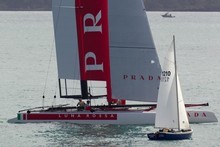
America’s Cup team Prada, Luna Rossa. Photo / Brett Phibbs.
The underwhelming number of entries for the 34th America’s Cup has forced organisers to re-think the format of next year’s regatta.
Just three challengers – Emirates Team New Zealand, Luna Rossa and Artemis – have paid the US$100,000 ($121,000) entry fee for the 2013 event. With those teams already well-advanced in the design and build process of their AC72s, America’s Cup regatta director Iain Murray admits it is looking increasingly unlikely that another syndicate will enter at this late stage.
“We’re hopeful of having more teams outside of the teams that are already building, but the reality is the runway is going to run out in the not too distant future as to when they can start building and get to the startline, so it is going to become clear pretty quickly as to who the Louis Vuitton Cup competitors are going to be,” said Murray, who was in Auckland yesterday for a competitor’s forum.
The number of entries are well down on what organisers had been predicting, with the proposed format of the Louis Vuitton challenger series allowing for eight challengers and scheduled to run for two months from July 4-September 1 next year.
But with only three competitors, the regatta is likely to be scaled back significantly.
“It’s going to change what’s on the table for sure,” said Murray when asked if the length of the Louis Vuitton series will be reduced.
“In the next few weeks we’ll start planning on a bunch of potential different formats as to what the Louis Vuitton Cup will look like. We’ll have to look at the mixture of the type of racing we do and how many races we do on each day and the breaks that we give the teams.”
Murray said he was aware of the importance of maintaining the history and heritage of the America’s Cup.
One of the options discussed yesterday was making each of the matches a best-of-three series rather than just a one-off match race.
This format could also be introduced for the America’s Cup World Series regattas this year.
But it is still not apparent how that would fit into an eight-week Louis Vuitton series, much to the frustration of the competing teams who are keen for clarity around this.
Murray said a number of different agendas were emerging in the competitors’ group, with some focused on AC45 issues, with the other four teams more interested in the AC72s.
For the AC72 group their main concerns yesterday were getting the length of course sorted, the format of the racing and the way the racing would be scored.
“What we’re seeing is a number of different agendas emerging and as we go forward we have a number of different subjects we need to deal with,” said Murray.
“The teams that are well-organised and strong are digging deeper into the detail of what we’re going to do.”
Controller: America’s Cup needs “significant additional fundraising”
The plan was to have $12 million raised a week ago to help cover the city’s costs for hosting the upcoming America’s Cup regatta.
A REUNION OF SORTS, A CARINA EVENT
It is really about Dick Nye gifting the trophies the “Carinas” had won over the years to the Indian Harbor Yacht Club, coupled with the publication of a book of the history of the “Carinas” and the family whom owned them. I was part of the crew for only a short period of time, 2 transatlantic crossings, 2 fastnet races, 2 admiral’s cups, 1 bermuda race, and of course all the smaller races during that time. I keep many fine memories and hope to see many of the former crew there.
CABIN FEVER
Now I know it is time for a break from winter.




